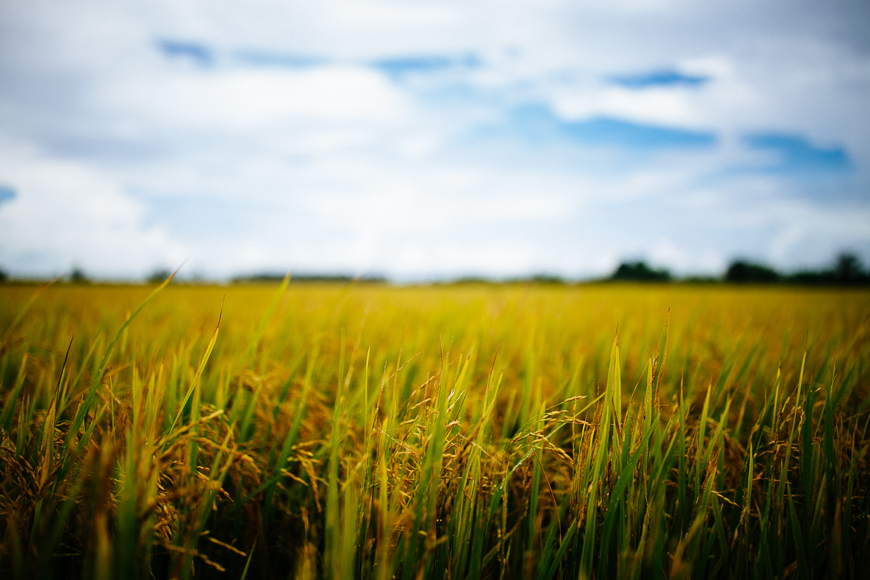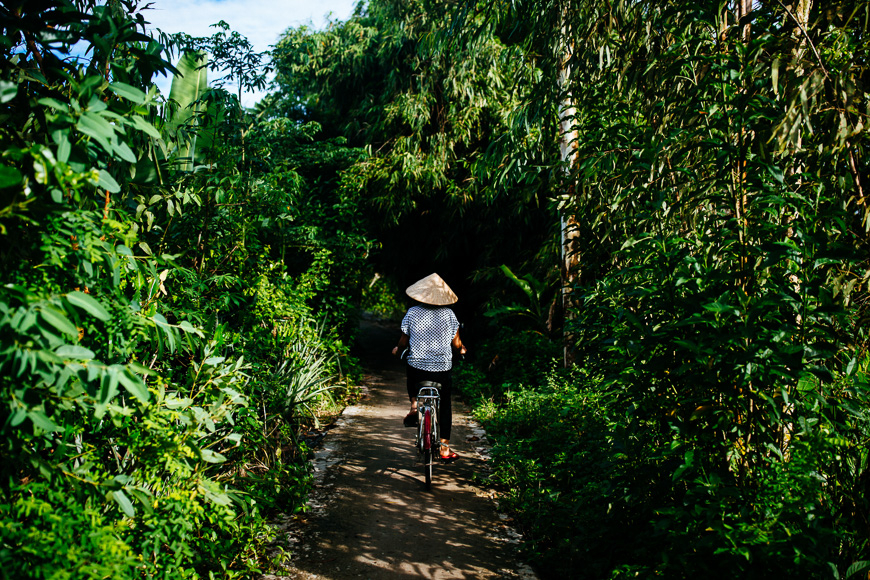Planning your trip and wondering about the best time to travel Mekong Delta? This guide walks you through the region’s seasons, climate, and cultural highlights, helping you decide exactly when to go for the richest experiences. From floating markets at sunrise to emerald rice fields and vibrant festivals, discovering the right timing can transform your journey into something truly unforgettable.
Discover When to Go for the Premier Experience
Why the Mekong Delta Is Vietnam’s Hidden Gem
>>> See more Quick facts and Geography in Mekong Delta Travel Guide
Stretching across southern Vietnam, the Mekong Delta is a vibrant patchwork of rivers, rice paddies, floating markets, and traditional villages. Often called “Vietnam’s rice bowl,” this region offers a mesmerizing blend of natural beauty and cultural heritage. Whether you’re drifting along calm canals or sharing a home-cooked meal with locals, the Delta promises an unforgettable experience-especially if you visit at the right time of year.

At Vietnam Responsible Tourism, we believe that exploring the Mekong Delta is not just about sightseeing-it’s about connecting with local communities, supporting eco-conscious travel, and preserving cultural traditions. Knowing the best season to explore the Mekong Delta Vietnam helps ensure that your journey leaves a positive impact while offering the most rewarding experiences.
Discover the best season to explore the Mekong Delta in Vietnam with our complete guide.
Understanding the Mekong Delta Climate
Before deciding the best time to travel Mekong Delta, it’s important to understand the region’s tropical monsoon climate. With distinct dry and rainy seasons, each bringing its own charm, the Delta’s weather patterns help you plan for comfort, photography, and smooth travel.
Overview of the Tropical Monsoon Climate
The Mekong Delta enjoys a tropical monsoon climate, meaning it experiences two main seasons-dry and rainy.
- Dry Season: December to April
- Rainy Season: May to November
During the dry months, the sun shines brightly, the skies are clear, and river conditions are perfect for cruising. The wet season, on the other hand, transforms the Delta into a lush paradise of emerald fields and vibrant waterways.
Seasonal Temperature Ranges and Rainfall
Knowing how temperatures and rainfall shift across the year is key to choosing the best time travel Mekong Delta. Warm days, refreshing showers, and steady river conditions all play a role in shaping activities—from market visits to cycling tours.
Temperatures hover between 25°C and 35°C (77°F to 95°F) year-round. Rainfall is most intense from July to October, but showers are often brief and refreshing rather than disruptive.
Best Season to Explore the Mekong Delta Vietnam
If you’re searching for the best time to travel Mekong Delta, the dry season from December to April is considered ideal. Clear skies, pleasant breezes, and lively cultural events create a perfect environment for first-time visitors and solo travelers alike.
The dry season (December to April) is generally considered the best time to visit the Mekong Delta, especially for solo travelers seeking comfort, accessibility, and adventure. The clear skies and pleasant weather make it easy to explore floating markets, cycle through villages, and take scenic boat trips without worrying about sudden downpours.
The Dry Season (December – April): The Ideal Time for Exploration
The dry months offer many advantages for those seeking the best time travel Mekong Delta. Calm waterways, vibrant Tet celebrations, and picture-perfect weather make this period the most popular and comfortable for exploring the region.
During this time, the Mekong’s water levels stabilize, allowing for smooth navigation across its intricate waterways. It’s also festival season-Tet (Vietnamese New Year) brings vibrant celebrations, street performances, and local feasts. You’ll experience the Delta at its most lively and photogenic.
The Rainy Season (May – November): A Different Kind of Beauty
For travelers who prefer lush scenery and fewer crowds, the rainy season can also be the best time travel Mekong Delta. The landscape flourishes, markets buzz with activity, and photographers will find endless inspiration in the Delta’s dramatic greens and reflective rivers.
While the dry season is more popular, the rainy season unveils a side of the Delta that few tourists experience. The landscape bursts into deep greens, rice fields shimmer, and floating markets brim with activity. For photographers and nature lovers, this time offers unbeatable visual appeal-just be prepared for occasional afternoon showers.
Monthly Travel Guide for the Mekong Delta
To pinpoint the best time travel to Mekong Delta for your interests, this month-by-month breakdown highlights weather, festivals, and seasonal activities—helping you match your travel style with the perfect timing.
December to February: Cool Breezes and Festive Vibes
The air is crisp, and the temperature averages around 26°C. It’s the peak travel season, coinciding with Tet festivals. Perfect for cycling, river cruising, and exploring cultural hotspots like Can Tho or Ben Tre.
March to May: Harvest Season and Flower Blooms
As temperatures rise slightly, fruit orchards flourish. The Sa Dec Flower Village becomes a paradise for photographers. This is the best time for sampling tropical fruits and attending village fairs.
June to August: Floating Markets in Full Swing
The Mekong Delta comes alive with floating markets like Cai Rang and Phong Dien. While rainfall increases, mornings are typically clear-ideal for market visits and food tours.
September to November: Rain Retreats and Tranquil Countryside
Late monsoon brings cooler weather and quiet rural charm. The crowds thin out, making it a great time for budget travelers and those seeking solitude.
Ideal Activities During Each Season
Different seasons offer different highlights, and choosing the best time travel Mekong Delta depends on what you want to experience—whether it’s long river cruises, Khmer festivals, or wildlife adventures.

River Cruises and Boat Tours
The dry season is perfect for long cruises, while the rainy season offers lush scenery for short trips.
Cultural Festivals and Local Life
Don’t miss Tet Festival (January-February) or Ok Om Bok Festival (October-November), celebrated by the Khmer community.
Nature and Ecotourism Adventures
Bird sanctuaries like Tram Chim National Park and U Minh Thuong are best visited from December to April, when migratory birds are abundant.
Essential Travel Tips for Solo Travelers
Navigating the Delta Alone
Solo travelers can easily explore via local buses, ferries, or rented motorbikes. Guided day tours are also budget-friendly and great for meeting fellow travelers.
Accommodation and Homestay Insights
Opt for riverside homestays for authentic cultural immersion-hosts often include home-cooked meals and boat trips.
Food and Local Cuisine Tips
Try Hu Tieu (rice noodle soup), banh xeo (crispy pancake), and fresh coconut water straight from the fruit-especially refreshing during hot months.
What to Pack Based on the Season
| Season | What to Pack |
| Dry Season | Light cotton clothing, sunscreen, sunglasses, reusable water bottle |
| Rainy Season | Waterproof jacket, quick-dry clothing, sandals, insect repellent |
| Year-Round | Hat, light scarf, travel-size medical kit, power bank |
Budgeting and Off-Season Travel Benefits
Traveling during the rainy season can save you up to 30% on accommodation and tours. Plus, fewer tourists mean more personal interactions with locals-a perk solo travelers love.
FAQs About the Best Season to Explore the Mekong Delta in Vietnam
Still unsure about the best time to travel Mekong Delta? This FAQ section addresses the most common questions about weather, markets, costs, safety, and seasonal logistics.
- What is the best month to visit the Mekong Delta?
January to March offers the most pleasant weather with cool breezes and minimal rainfall. - Is the rainy season bad for travel?
Not at all! Rain showers are short and often add a refreshing charm to the scenery. - Can I visit the floating markets year-round?
Yes, but they’re most vibrant during the rainy season when water levels rise. - Is it safe for solo travelers?
Absolutely. Locals are friendly, and crime rates are low, especially in rural areas. - What’s the average cost for a solo trip?
Budget travelers can expect to spend around $25-40 per day, including food, lodging, and local transport. - Do I need to book tours in advance?
During peak season (December-February), it’s wise to book popular river tours and homestays ahead of time.
Conclusion – Plan Your Perfect Mekong Delta Journey
No matter your preferred travel style, there’s always a best time to travel Mekong Delta that aligns with your needs. With the right guidance and responsible tour operators, every season brings its own beauty and depth to your journey.
The best season to explore the Mekong Delta in Vietnam depends on your travel goals. If you prefer sunny skies and cultural festivities, aim for December to April. For a quieter, more lush experience, try May to November. Either way, the Delta’s beauty, hospitality, and tranquility will leave a lasting impression.
At Vietnam Responsible Tourism, we’re passionate about helping travelers experience the Mekong Delta responsibly through authentic local interactions, low-impact tours, and unforgettable adventures that truly give back to the communities you visit.
So book the tour with us and let the magic of the Mekong Delta unfold-the heart of southern Vietnam awaits you!
Plan Your Journey with Purpose
Make your next journey more than just a getaway. By booking through a local tour Vietnam operator or an eco travel agency Vietnam, you’re not just taking a trip, you’re supporting environmental education, habitat preservation, and ethical tourism.
Contact us to create your ideal itinerary. Let us help you craft a Mekong Delta travel guide itinerary with local guides, including eco-friendly homestays, organic farming experiences, and cultural exchanges.
Vietnam Responsible Tourism is a travel agency that associates with different Community-based Tourism groups with the aim to improve living conditions in remote mountain regions of Vietnam since 2017.



